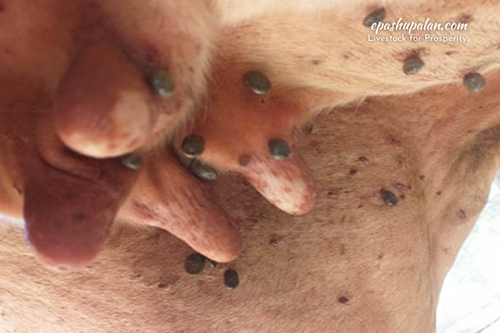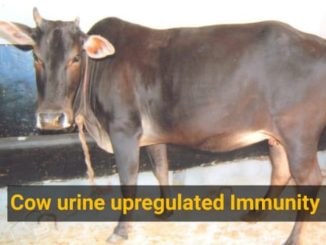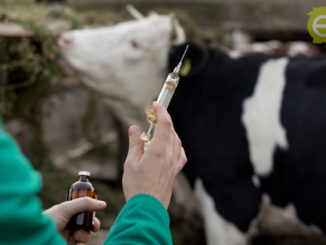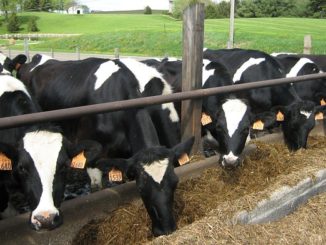Ticks are significant blood-sucking ectoparasites that can have detrimental effects on domestic animals. These arachnids attach themselves to the skin of their hosts and feed on their blood, causing various issues that can impact the health and productivity of dairy animals leading to some negative effects like blood loss, reduced weight gain, reduced milk production, irritation and allergic reaction, transmission of diseases, decreased reproductive performance as a consequence of this acaricides form the canter of control and eradication efforts because they offer relatively quick and cost-effective suppression of tick populations.
Long-term use of acaricides has generated resistance which results from the survival and spread of resistant genotypes that have capability to tolerate acaricide selection pressure in the environment. Further, continued exposure to an acaricide results in removal of the susceptible population with a concomitant increase in the proportion of the resistant strains. Resistance is defined as the capacity acquired by individuals of a parasite population that allows them to survive doses of chemicals which are generally lethal to the normal population. Resistance is developed in three step’s the first is establishment of resistance, second step is development of resistance and the third is emergence of resistance genes responsible for the onset of resistance which are already present at very low levels in the tick population before the introduction of a new acaricide. In the initial phase, the frequency of heterozygous resistant individuals (single allele mutation) within the population and the rate of increase in the frequency of the resistant allele are low. In the emerging phase, given continued exposure to a drug, the frequency of heterozygous resistant individuals within the population increases.

Finally, sustained selection pressure results in increasing numbers of homozygous resistant individuals, which ultimately predominate in the population. Another contributing factor in the development of acaricide resistance is under dosing and frequent use of the same acaricide for a long period of time. Resistance is most extensive and diverse in the one-host cattle tick viz. R. (B.) microplus. However, resistance to acaricides has been much slower to develop in the two and three host ticks (e.g., Rhipicephalus, Amblyomma, Hyalomma, Ixodes), where longer generation times, less acaricidal exposure of the immature tick stages and presence of alternative hosts may help to reduce the selection pressure. Here are some measures that can be implemented to help avoid or manage acaricide resistance
- Rotation of Acaricides: Instead of using the same acaricide continuously, rotate between different classes of acaricides with distinct modes of action. This approach reduces the selective pressure on ticks, making it harder for resistance to develop.
- Combination Treatments: Consider using acaricides that combine two or more active ingredients with different modes of action. Combination treatments can be more effective in controlling ticks and may help slow down the development of resistance.
- Targeted Application: Avoid blanket treatments and only use acaricides when necessary. Implement a targeted application approach, focusing on animals showing signs of tick infestation or those in high-risk areas.
- Proper Dosage and Application: Always follow the manufacturer’s recommendations for dosages and application methods. Using incorrect dosages or applying acaricides improperly may promote resistance development.
- Integrated Biological Control: Explore the use of biological control agents, such as predatory mites or fungi, birds that attack ticks. Integrating biological control methods with acaricides can help reduce the reliance on chemical treatments and slow down resistance development.
- Pasture Management: Maintain pastures and grazing areas in good condition. Regularly mow grass, remove weeds, and manage vegetation to reduce tick habitats and improve animal hygiene.
- Host Management: Rotate or isolate grazing areas for different livestock species, including wild animals if possible. Some ticks prefer specific hosts, and reducing exposure to different host species can help manage tick populations.
- Quarantine and Biosecurity: When introducing new animals to the dairy farm, implement a quarantine period to detect and treat any potential tick infestations before they spread to the rest of the herd.
- Genetic Selection: Consider breeding dairy animals with natural resistance or tolerance to tick infestations. Selecting animals that show less susceptibility to ticks can be an additional tool in tick control strategies.
- Regular Monitoring: Conduct routine tick surveillance to detect early signs of resistance. If resistance is suspected, adjust the tick control program accordingly and seek guidance from veterinary professionals.
Remember, acaricides are just one part of an integrated tick control approach. By combining multiple strategies and taking a proactive approach, dairy farmers can help minimize the development of acaricide resistance and maintain effective tick control in their livestock. Consulting with veterinary experts or local agricultural extension services can provide valuable guidance and support in implementing these practices.






Be the first to comment